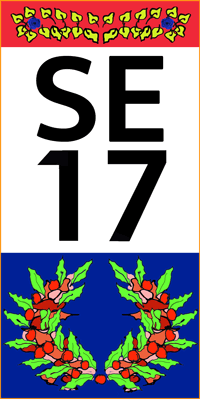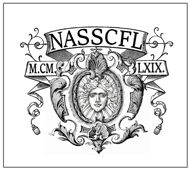CAHIERS DU DIX-SEPTIÈME: AN INTERDISCIPLINARY JOURNAL
ELECTRONIC MANUSCRIPT SUBMISSION GUIDELINES
(These supersede any previously published guidelines)
(Rev. MAR 15, 2022)
An interdisciplinary journal, Cahiers du Dix-septième welcomes its contributors’ diversity of academic backgrounds. In the interest of format consistency, however, a uniform standard for articles is necessary. The Editor therefore requests that all manuscripts submitted conform to the following guidelines:
-
Cahiers du Dix -septième no longer considers submissions on paper or computer diskette. Mss. must be sent in electronic form only, as e-mail attachments in Microsoft Word format (doc or docx) or rtf format with minimal document formatting to
1) the Editor, Jean-Vincent Blanchard (jblanch1ATswarthmoreDOTedu)
Text must be preceded by a cover page that gives the title of the article, the author’s name and contact information (e-mail, telephone, institutional affiliation). (This can also be included in the body of the email.)
-
Cahiers du Dix-septième endorses the current edition of the MLA Handbook. Authors shall follow these guidelines exactly.
-
Refereeing: Cahiers du Dix-septième referees all the articles it publishes. Articles submitted independently are double-blind reviewed. Articles submitted as part of conference proceedings are blind refereed by an outside reader, and reviewed by the Session Chair according to the same standards of rigorous scholarship as independently-submitted articles. The Editor reserves the right to further refereeing if they deem it necessary. The decision to publish or not to publish rests with the Editor alone.
-
The normal maximum length for articles, including notes and works cited, is 12,000 words (and submissions of articles in the 5,000-11,000 word range are also welcome!). Longer contributions may be accepted, however, so long as their substance justifies their length. Contributions may be either in English or in French. Authors are strongly encouraged to use the language in which they feel most comfortable writing. Unless they are in common everyday use, words or expressions which are foreign to the article’s language must be italicized. Words in non-Roman alphabets must be transliterated to the Roman alphabet and italicized.
-
Quotations should always be from the original text, taken whenever possible from the best scholarly editions available. If in languages other than English or French, quotations must be translated in the language of the article (If available, a standard literary translation is preferable). Quotations longer than 2 lines should be indented one-half inch (1.27 cm) from left and right margins in a separate citation paragraph. Use of the “Citation” style in MS Word is greatly preferred (see No. 6 below).
-
Mss. shall be submitted in electronic form, as an e-mail attachment with double-spacing throughout (excepting quotations, footnotes, and works cited). One inch (2.54 cm) minimum margin all around. Page size may be US Letter or A4. Only acceptable font is Times New Roman 12-point.
Please do not indent paragraphs using tabs. Please do not use tabs at all.
If you have special formatting notes regarding placement of an epigraph or formatting a poetry quotation, make an annotation after the text in question inside square brackets in bold font briefly noting the formatting issue, and it will be addressed.
The only acceptable word-processor is MS Word, for Macintosh or Windows. It is the author’s responsibility to have his or her document translated to MS Word (or to send it in a MSWord readable format, namely rtf, if it was composed using another word processor).
For the main body of text use the “Normal” style-sheet (& document template).
For quotations, use the “Citation” style-sheet, and the “Bibliography” for the works cited section. It is highly recommended that the ms. be put through a spell-checker before submission.
-
In matters of language, please consult:
• for English spelling and hyphenation: Webster’s Third New International Dictionary of the English Language or the OED.
• for French spelling and hyphenation: Le Robert. Le Petit Robert 1's current edition is considered a most acceptable standard for common nouns, verbs, adjectives, etc. Le Petit Robert 2's current edition is a most acceptable standard for proper nouns.
• for points of French grammar and usage: Grevisse’s Le bon Usage.
-
Titles & other formatting issues
* Titles of books, periodicals, musical pieces, or paintings, are italicized, never underlined. The individual words in titles of books are all capitalized in English (except for prepositions, unless the first word of the title is a preposition. Titles in French have only the first word and proper nouns capitalized, unless the first word is an article. In that case it is capitalized as well as the word following it (La Princesse de Clèves, La Vraye histoire comique de Francion). Titles of articles should be in quotation marks.
* When the main language of the article is English, use English quotation marks: “...”.
When the main language is French, use French guillemets: «...». (Microsoft Word makes this very easy: if you set your document language as French, Word automatically uses guillemets) Avoid straight double-quotes: "..." (In Word, you can do this by going to the “Tools” menu, selecting “AutoCorrect” and from there selecting the tab “Autoformat as you type” and looking at the “Replace as you type” section. Under this rubric, make sure that the check box next to “Straight Quotes” with “Smart Quotes” is checked.
* Sculptures, especially very famous ones, have names, not titles, and therefore they are not italicized, but capitalized (la Vénus de Milo, la Victoire de Samothrace, but Et in Arcadia ego...etc.).
-
Bibliographical references should be embedded in the text, rather than referenced in the notes. When quoting or paraphrasing a given item, the quotation or reference must be followed by the author's name and the page number between parentheses, with no separating comma (Barthes 134). If more than one work form the same author is used, then the title, or an intelligible abbreviation should be used (Le Plaisir du texte 115/Plaisir 115, Mythologies 98). Common referencing expressions, such as supra, infra, or q. v. must be parenthesized and italicized (supra) (infra) (q. v.).
-
Footnotes will be used throughout, and should be used not for bibliographic purposes, but for explanatory material; these should be numbered consecutively throughout the manuscript. There are several things to make sure of in Word to get the Footnotes in the proper numerical format.
1. When you “insert” your first note, a dialog box will come up, please select “Footnote” from the two options (“Footnote” or “Endnote”).
2. Then click on the “Options” button. Here you have several things to do, but you can do them all at once & they will apply to the entire document
a. Make sure you have clicked at the top on “All Footnotes”
b. Where it says “Number format” make sure the format “1,2, 3 …) is selected. If not, use pull-down menu & select “1, 2, 3, ...”
c. Where it says “Numbering” select “Restart each section”
A list of “Works Cited” or “Works Consulted” (if the article is in French, it’s “Ouvrages cités ou consultés”) contains all books and articles used as reference, listing them by author's name in alphabetical order, with anonymous works coming first, by title, in alphabetical order. When more than one work by the same author is used, all entries of the author’s name after the first one are replaced by 3 “em” dashes in a row (use “insert symbol” menu from MSWord if your computer does not automatically generate “em” dashes.
For any further questions regarding footnotes, please consult with the editors.
-
In the case of illustrations, the author must obtain permission to reprint and provide proof of permission in the case of copyrighted materials. Editor reserves the right to reject any illustrations if proof of permission is not included, quality is poor, or placement proves difficult.
Illustrations must be in TIF or JPEG format and submitted as separate files with filenames keyed to their placement in the text.
-
In the case of video excerpts, it is again the author’s responsibility to provide proof of permission to reproduce the excerpts.
-
Musical examples are welcome, and should be inserted into the document where the author wants them as image files at the appropriate size for a virtual page size of 6 x 9 inches (ca. 15.2 cm x 22.9 cm) with half-inch (1.3 cm) margins all around. Authors should also submit all musical examples as separate image and finale files. Authors including music examples should consult with the editors for any further questions.
-
Exceptions to the MLA Handbook: Articles written in French should have the footnote numbers precede punctuation marks, and ellipses should be indicated in square brackets: [...].
They must otherwise conform to the above guidelines.



